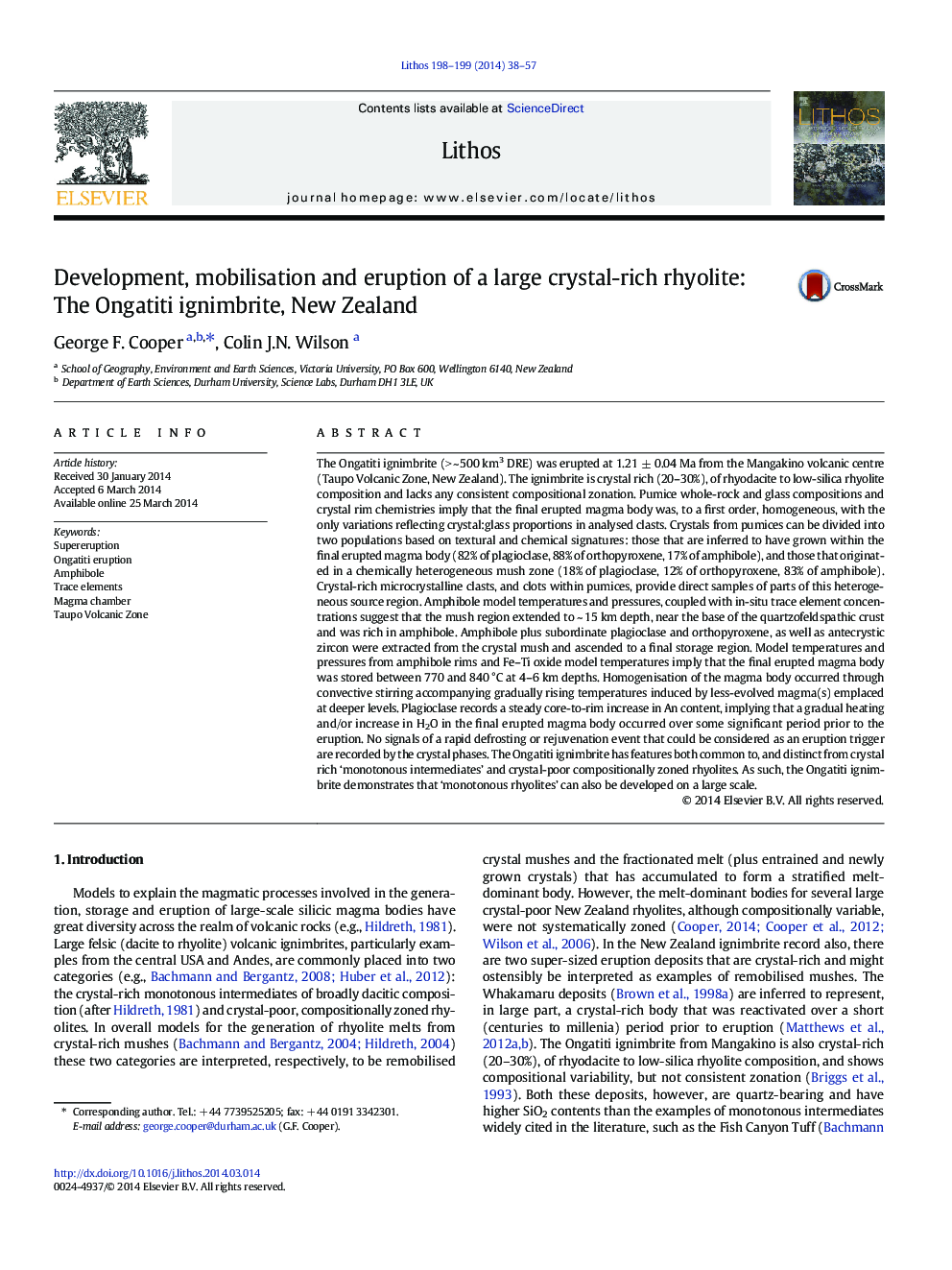| کد مقاله | کد نشریه | سال انتشار | مقاله انگلیسی | نسخه تمام متن |
|---|---|---|---|---|
| 4716062 | 1638677 | 2014 | 20 صفحه PDF | دانلود رایگان |

• Crystal-specific study of the crystal rich > 500 km3, 1.21 Ma Ongatiti ignimbrite.
• Major crystal phases can be fingerprinted to origins within either a source mush zone or the holding chamber.
• Amphiboles record a large variation in trace element concentrations.
• An amphibole dominated crystal mush was present in the mid-lower crust.
• Large-volume ‘monotonous rhyolites’ can develop through gradual mobilisation of mush.
The Ongatiti ignimbrite (> ~ 500 km3 DRE) was erupted at 1.21 ± 0.04 Ma from the Mangakino volcanic centre (Taupo Volcanic Zone, New Zealand). The ignimbrite is crystal rich (20–30%), of rhyodacite to low-silica rhyolite composition and lacks any consistent compositional zonation. Pumice whole-rock and glass compositions and crystal rim chemistries imply that the final erupted magma body was, to a first order, homogeneous, with the only variations reflecting crystal:glass proportions in analysed clasts. Crystals from pumices can be divided into two populations based on textural and chemical signatures: those that are inferred to have grown within the final erupted magma body (82% of plagioclase, 88% of orthopyroxene, 17% of amphibole), and those that originated in a chemically heterogeneous mush zone (18% of plagioclase, 12% of orthopyroxene, 83% of amphibole). Crystal-rich microcrystalline clasts, and clots within pumices, provide direct samples of parts of this heterogeneous source region. Amphibole model temperatures and pressures, coupled with in-situ trace element concentrations suggest that the mush region extended to ~ 15 km depth, near the base of the quartzofeldspathic crust and was rich in amphibole. Amphibole plus subordinate plagioclase and orthopyroxene, as well as antecrystic zircon were extracted from the crystal mush and ascended to a final storage region. Model temperatures and pressures from amphibole rims and Fe–Ti oxide model temperatures imply that the final erupted magma body was stored between 770 and 840 °C at 4–6 km depths. Homogenisation of the magma body occurred through convective stirring accompanying gradually rising temperatures induced by less-evolved magma(s) emplaced at deeper levels. Plagioclase records a steady core-to-rim increase in An content, implying that a gradual heating and/or increase in H2O in the final erupted magma body occurred over some significant period prior to the eruption. No signals of a rapid defrosting or rejuvenation event that could be considered as an eruption trigger are recorded by the crystal phases. The Ongatiti ignimbrite has features both common to, and distinct from crystal rich ‘monotonous intermediates’ and crystal-poor compositionally zoned rhyolites. As such, the Ongatiti ignimbrite demonstrates that ‘monotonous rhyolites’ can also be developed on a large scale.
Journal: Lithos - Volumes 198–199, June 2014, Pages 38–57